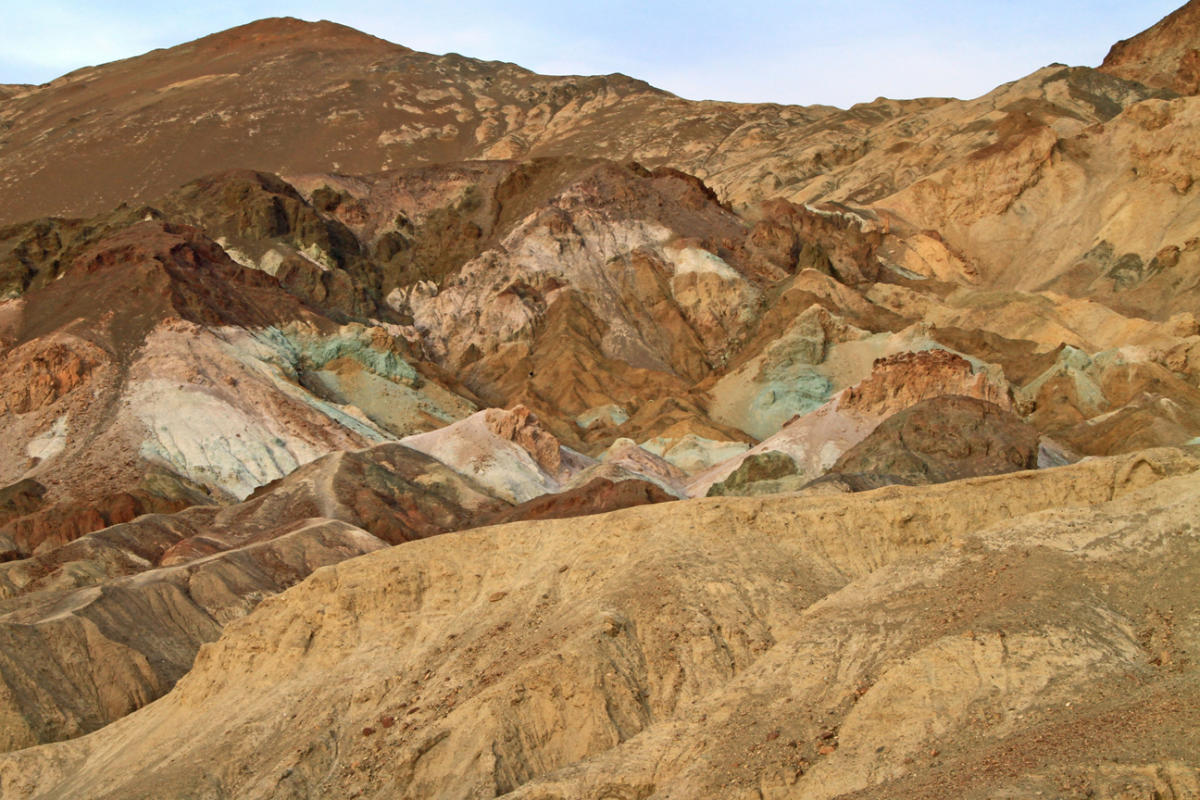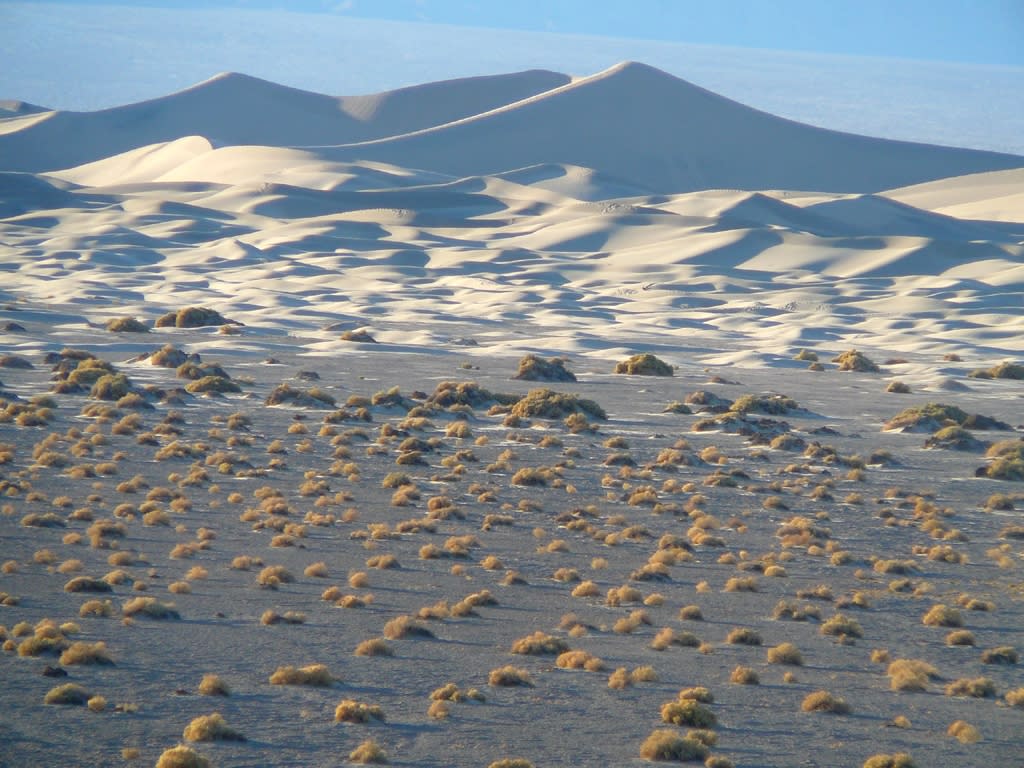While its name may sound intimidating, Death Valley is home to some of the most scenic and beautiful landscapes and hiking trails that promise an unforgettable adventure for every visitor. From how to plan ahead to what to see and do, here is your ultimate first-timers guide to visiting Death Valley in Eastern California.
Planning Your Trip

Before setting off on your adventure, be sure to plan your trip meticulously. Death Valley gets its name due to the extreme heat during the summer months. It is highly recommended to visit during fall and spring. Be sure to check the park's website for the most up-to-date information on weather conditions, road closures, and events happening in and around the area. Also be sure to book your accommodations well in advance, as lodging options are limited within and around the park. Off road vehicles or four-wheel drive is not needed to access most trails and landmarks, but be prepared to drive on dirt roads and pavements in most areas.
Getting There
Death Valley is a vast desert region located in Eastern California. It is situated within the Mojave Desert and stretches across Inyo County and San Bernardino County. Visitors can access Death Valley from various directions, including from the east via Nevada and Las Vegas or from the west through California, near the town of Lone Pine. If you’re planning to fly into the destination, the two closest airports to the park are Las Vegas McCarran International Airport (LAS) and Los Angeles International Airport (LAX). The drive from LAS is around 2h 30m and the drive from LAX is about 4h 30m. The Palm Springs International Airport is another excellent option; it’s about 5 hours by car and the scenic drive is beautiful.
Must-See Landmarks
Badwater Basin

Badwater Basin is the lowest point in North America, sitting at an elevation of 282 feet below sea level. It’s a vast salt flat, stretching over 200 square miles made up of evaporated remnants of a large lake. The pathway itself extends about 5 miles so most people don’t walk all the way out. But, helpful tip, the further you walk, the prettier it gets!
Devil’s Golf Course: Prepare to be amazed by this otherworldly landscape. Devil’s Golf Course a vast terrain made of evaporated salt crystals formed over thousands of years that create a seemingly endless expanse of jagged textures and serrated surfaces.
Zabriskie Point This is one of the most photographed locations in Death Valley National Park and it offers spectacular views of eroded badlands painted in vibrant hues. It was apparently named after one of the first 49ers (gold rush pioneers) to visit the area, Christian Zabriskie.
Artist’s Palette

Artist Palette is another well known location for photographers. This landscape bursts with an incredible mix of colors. See hills of deep purples, rich reds, bright yellows, and soft greens created by minerals and oxidation.
Mesquite Flat Sand Dunes

These sandy hills offer a surreal landscape that seems straight out of a dream. They’re towering sand dunes that have been shaped by the winds to create a constantly changing canvas of ripples and patterns. While there isn’t an actual trail here, the tallest dune is about 2 miles round-trip and the views from the top are incredible. The best time to experience these shifting hills of sand is either at sunrise or sunset.
Father Crowley Overlook: Father Crowley Overlook is located near the western end of the park. This vista point is a famous spot for fighter jets to practice going through a narrow canyon and the area is actually an official military “low altitude flight training area”. Yes, like Top Gun.
Golden Canyon to Red Cathedral: This is a 3 mile, out & back hike that takes you through incredible yellow colored canyon walls, through a slot canyon and out to a red rock amphitheater overlooking the golden hills.
Natural Bridge: Natural Bridge is a 2 mile, out & back hike leading you through a stunning orange rock canyon to a natural rock bridge. Just past the Natural Bridge is what is referred to as a dry waterfall, which is just a sheer cliff where a waterfall once flowed.
Mosaic Canyon
This hike is 3.4 miles, out & back and it leads you through narrow, marble looking canyon walls to another dry waterfall. As you venture into the canyon, you’ll be greeted by stunning rock formations, resembling a mosaic masterpiece.
Darwin Falls: At around 18 feet tall, Darwin Falls is one of the only year-round flowing waterfalls in Death Valley National Park. It’s a 1.9 mile, out & back trail that leads you through a lush canyon, lined with vibrant vegetation that thrives near this rare flowing water.
Ubehebe to Little Hebe: Pronounced YOU-bee-HEE-bee, this is a 1.8 mile trail that takes you around the Ubehebe Crater; a large volcanic crater 600 feet deep and half a mile across. About half way through the loop, there is a sign that reads “Little Hebe" which will direct you over to a second, smaller (and likely younger) crater.
Flora & Fauna
Death Valley, despite its seemingly harsh and inhospitable environment, is home to a surprising array of unique flora and fauna, each adapted to thrive in this extreme desert landscape. In fact, this desert is actually home to over 1,000 plant species and spring wildflower blooms are a popular attraction and a reason visitors flock to the region each year. Be sure to practice responsible tourism and leave no trace behind. Respect the fragile desert ecosystem by staying on marked trails, not disturbing wildlife, and properly disposing of your waste. Help preserve this natural wonder for future generations to enjoy!
Where to Stay & Eat
Dining and lodging options are relatively limited within and around the park. Furnace Creek is the main hub for lodging and dining where you'll find the historic Furnace Creek Inn, which offers a luxurious stay with stunning views and upscale dining options. Additionally, there's the Furnace Creek Ranch, providing more affordable accommodations along with family-friendly dining options at the Wrangler Steakhouse and the Forty Niner Cafe.
On the western side of Death Valley, Stovepipe Wells Village offers more rustic and budget-friendly stays, with motel-style rooms and RV camping, and the Toll Road Restaurant, which serves comfort food against the backdrop of nearby sand dunes. Venture outside the park to Panamint Springs Resort for a quieter and secluded experience, with beautiful views of the Panamint Valley and a restaurant serving tasty meals. If you venture a bit further outside the park, you can also find a plethora of vacation rental options to stay at as well.
Whether you're a seasoned hiker or a casual traveler, Death Valley promises an unforgettable experience that will leave you with lasting memories from this otherworldly destination. Want to learn more about hiking in Southern California? Take a look at these scenic hiking trails in Greater Palm Springs and embark on a new adventure!
Explore Joshua Tree
With nearly 800,000 acres of mystical beauty, Joshua Tree National Park is...
Read MoreCA DESERTS
Unlike anywhere else in the state, or for that matter the world, the California...
Read More





















